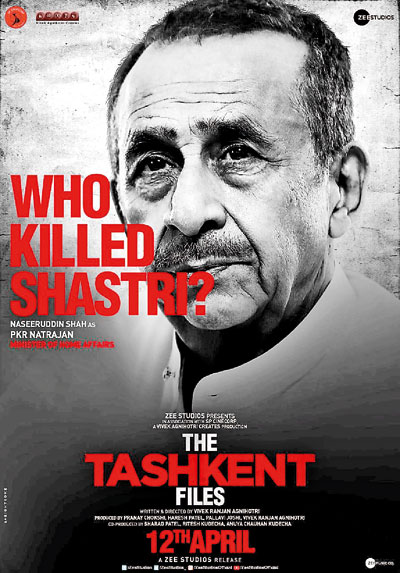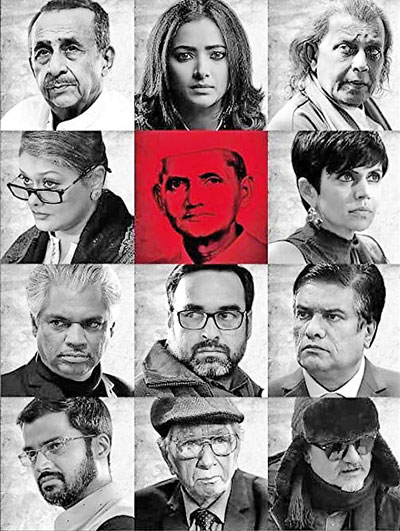Bollywood political thriller amidst Indian election
View(s):While the Indian election is on the run, ‘The Tashkent Files’ political Bollywood thriller about the death of Indian Prime Minister Lal Bahadur Shastri, which creates box-office records, is now being screened in Sri Lanka.
 Written and directed by Vivek Agnihotri, the film stars two India’s ever-popular stars Naseeruddin Shah and Mithun Chakraborty in the lead.
Written and directed by Vivek Agnihotri, the film stars two India’s ever-popular stars Naseeruddin Shah and Mithun Chakraborty in the lead.
The Tashkent Files revolves around the mysterious death of India’s 2nd Prime Minister Shri Lal Bahadur Shastri and attempts to uncover if he had actually died a natural death, or, as alleged, was assassinated.
On June 9, 1964 Lal Bahadur Shastri succeeded Jawaharlal Nehru as the Prime Minister of India. According to the Media reports Shastri emerged as the consensus candidate after the sudden demise of Nehru, even though there were more influential leaders within the ranks of Congress. Shastri was a follower of Nehruvian socialism and displayed exceptional cool under dire situations.
He tackled many elementary problems like food shortage, unemployment and poverty. To overcome the acute food shortage, Shastri asked the experts to devise a long-term strategy. This was the beginning of famous “Green Revolution”. Apart from the Green Revolution, he was also instrumental in promoting the White Revolution. The National Dairy Development Board was formed in 1965 during Shastri’s stint as Prime Minister.
After the Chinese aggression of 1962, India faced another aggression from Pakistan in 1965 during Shastri’s tenure. Shastri showing his mettle, made it very clear that India would not sit and watch. While granting liberty to the Security Forces to retaliate, he said, “Force will be met with force”.
The Indo-Pak war ended on 23 September 1965 after the United Nations passed a resolution demanding a ceasefire. The Russian Prime Minister, Kosygin, offered to mediate and on 10 January 1966, Lal Bahadur Shastri and his Pakistan counterpart Ayub Khan signed the Tashkent Declaration.
But on the following day Lal Bahadur Shastri, who had earlier suffered two heart attacks, died of a third cardiac arrest on 11 January, 1966.
Shastri’s sudden death immediately after signing the Tashkent Pact with Pakistan raised many suspicions. His wife, Lalita Devi, alleged that Shastri was poisoned and the Russian butler serving the Prime Minister was arrested. But he was released later as doctors certified that Shastri died of cardiac arrest. The media circulated a possible conspiracy theory hinting at the involvement of CIA in the death of Shastri.
The RTI query posted by author Anuj Dhar was declined by the Prime Minister Office citing a possible souring of diplomatic relations with the US.



